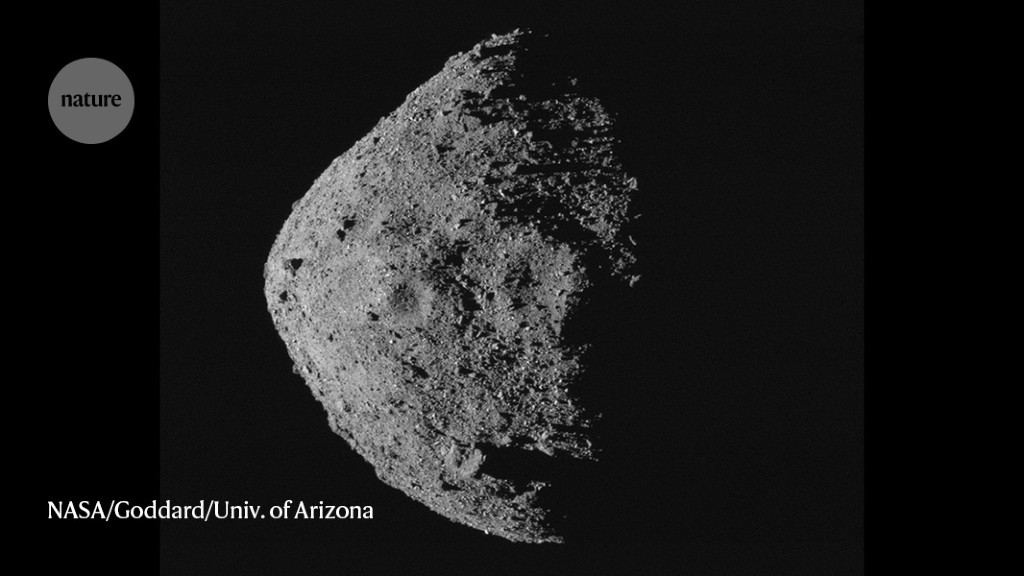
NASA's OSIRIS-REx spacecraft is set to sample the diamond-shaped asteroid Bennu.Credit: NASA/Goddard/University of Arizona.
On 20 October, some 334 million kilometres from Earth, the agency’s OSIRIS-REx spacecraft will approach a dark-coloured, diamond-shaped asteroid named Bennu, with the aim of touching its surface for a few seconds — long enough to hoover up a collection of dust and pebbles.
If successful, the spacecraft will then fly this carbon-rich rubble back to Earth, where scientists can probe it for clues to the history of the Solar System.
It follows two missions from the Japan Aerospace Exploration Agency (JAXA) that have scooped dust off the surface of asteroids — including some retrieved last year that is currently on its way back to Earth for analysis.
Scooping a sample directly off an asteroid offers a pristine glimpse at rocks left over from the formation of the Solar System more than 4.5 billion years ago.
Each asteroid has its own story to tell about how it formed and evolved over time; Bennu is particularly alluring because it might contain material that is rich in organic compounds that are found throughout the Solar System, including in life on Earth.
When Lauretta and his colleagues picked Bennu as its target, they thought the 500-metre-wide asteroid would be relatively smooth and easy to land on.
But after OSIRIS-REx arrived and began orbiting Bennu in 2018, the craft got a closer look and found large, dangerous boulders1.
Its target is a 16-metre-wide crater named Nightingale, which offers a relatively smooth surface for a landing.
US Eastern time, it will release a puff of nitrogen gas that will blow onto the surface, kicking up small grains in a cloud of asteroid debris.
(It cannot go in to sample Nightingale for a second time, because the original nitrogen puff will have pushed small rocks on the surface to uncertain locations, making a ‘double dip’ hazardous, Lauretta says.) Sampling at Osprey would probably happen in January; regardless, the spacecraft is due to depart Bennu in March, and will eventually land on Earth with its precious cargo in 2023.
While orbiting the asteroid, OSIRIS-REx detected that some of the boulders on Bennu are shot through with veins of ancient carbon-rich material known as carbonate.
Researchers plan to compare the Bennu samples with the ones currently on their way back to Earth from Ryugu, the larger asteroid that JAXA’s Hayabusa2 spacecraft visited last year.
Ryugu appears to have less water-rich material on its surface than does Bennu; by comparing the samples, researchers will be able to better understand how common watery processes and organic materials are on asteroids, says Chan.
Scientists will also scour Bennu’s rocks for clues about how to protect Earth from asteroidsR
Bennu orbits dangerously near Earth and has a small chance of smashing into the planet sometime in the twenty-second century.
By closely examining the consistency of Bennu’s rocks, scientists could propose ways to deflect or break apart threatening near-Earth asteroidsJ
“Any sample from Bennu is going to be amazingly useful — a critical addition to the collection of planetary samples that we have on Earth,†says Jawin.